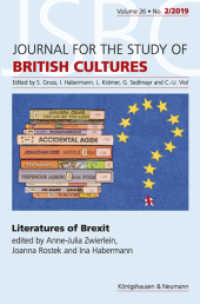Full Description
How can you build a classroom environment that creates buy-in from students? Richard Young shows how teacher credibility goes beyond building relationships. He offers a practical framework centered on student perception, engagement, motivation, trust, and communication, resulting in improved learning outcomes.
With compelling visuals throughout, Young offers insights into how student motivation and social dynamics shape their perceptions. He also explains the nuances behind student inferences, social contagion, and cognitive alignment, so you can learn how to proactively address misinterpretations, reinforce credibility, promote positive student perceptions and create a more connected, cooperative learning environment. Each chapter offers actionable strategies and research-based tools to help you implement the ideas.
Teachers at the middle and high school level, where social dynamics and student misperceptions frequently impact learning environments, will particularly benefit from the unique and effective ideas in this book.
Contents
Part 1: How Students Interpret You 1. Simplifying the Complexity of Your Classroom 2. How Students Think About You and Why It Matters 3. Student Perception: What's Real and What's Not 4. Peer Influence and Social Contagion in Your Classroom 5. Echo Chambers and Tribalism in Your Classroom 6. Why Your Credibility is so Critical? Part 2: Beyond Contagion: Making Sense of Group Perceptions in Your Classroom 7. What Most of Your Students Have in Common 8. When Your Class Doesn't See You the Same Way 9. The Two Classroom Profiles and What They Mean for You 10. What You Can't See Can Still Hurt You Part 3: Activating the Codebook: Replacing Irrational Thinking and Inoculating Against Coercion and False Beliefs 11. The Irrational Beliefs That Derail Student Thinking 12. The One Core Irrational Belief that Destroys Your Credibility 13. How Rational Thinking Transforms Your Classroom 14. Code 1: Replacing Irrational Beliefs with Rational Ones 15. Code 2 - Replacing Peer Coercion and Misinformation with Critical Thinking and Prosocial Behavior 16. Quick-Start Study Guide: Turning Codes Into Classroom Practice






